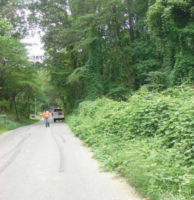 Purdue University - Extension - Forestry and Natural Resources
Purdue University - Extension - Forestry and Natural Resources
Got Nature? Blog
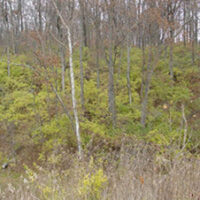
In early November, invasive bush honeysuckle is one of the only understory shrubs that are still green.
In early November, invasive bush honeysuckle is one of the only understory shrubs that are still green. While many of our native plants are dormant, Asian bush honeysuckle remains green longer. This makes them easy to locate since they are one of the few green shrubs in the woods. Doing control measures this time of year also reduces impacts to non-target plants.
How do you control it? That depends on what resources you have available. Small plants can be easily pulled by hand; be sure to hang them on tree branch rather than laying them down on the ground so they don’t re-root. In most cases, some method of herbicide control will be necessary. Ohio State University has a good guide on various methods of control, Controlling Non-Native Invasive Plants in Ohio Forests: Bush Honeysuckle.
Not sure where to start on your property? One of the most daunting aspects of invasive plant control is where to begin. Ellen Jacquart, former Director of Stewardship for the Nature Conservancy in Indiana, wrote an article in the Indiana Woodland Steward. The Where do I Start?! Prioritizing Invasive Plant Control article describes how to plan your invasive plant control including prioritizing what to do first.
Resources:
Subscribe to the Indiana Woodland Steward Newsletter
Consider Fall Eradication of Asian Bush Honeysuckle, Purdue Landscape Report
Asian Bush Honeysuckle, Purdue Extension YouTube Video
A Woodland Moment: Asian Bush Honeysuckle, Purdue Extension – Forestry and Natural Resources (FNR) YouTube Video
Invasive Plants of the Eastern U.S.: An Introduction to the Problematic Non-Native Species, The Education Store, Purdue Extension’s resource center
Report Invasive Species, Purdue Invasive Species
Report Invasive Species: Asian Bush Honeysuckle,
The GLEDN Phone App – Great Lakes Early Detection Network
EDDMaps – Early Detection and Distribution Mapping System
Episode 11 – Exploring the challenges of Invasive Species, Habitat University-Natural Resource University
What Are Invasive Species and Why Should I Care?, Purdue Extension-FNR Got Nature? Blog
Emerald Ash Borer Information Network, Purdue University and Partners
Aquatic Invasive Species, Illinois-Indiana Sea Grant (IISG)
Invasive plants: impact on environment and people, The Education Store, Purdue Extension’s resource center
Subscribe Purdue Extension-Forestry and Natural Resources YouTube Channel
Brian MacGowan, Wildlife Extension Specialist
Department of Forestry and Natural Resources, Purdue University
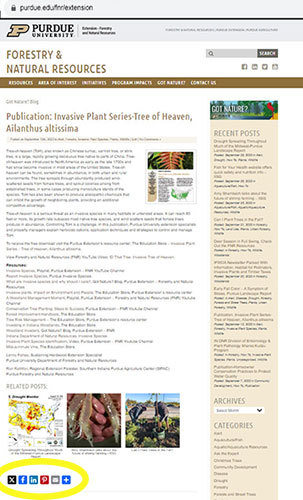 The Purdue Extension – Forestry & Natural Resources (FNR) team would like to take this time to thank our followers for their requests and comments. We received requests to improve our Purdue Extension – FNR’s Got Nature? Blog social media buttons and we would like to announce they are ready for you to share our articles. You can easily share the blog articles to X-Twitter, Facebook, LinkedIn, and Pinterest, along with an Email option.
The Purdue Extension – Forestry & Natural Resources (FNR) team would like to take this time to thank our followers for their requests and comments. We received requests to improve our Purdue Extension – FNR’s Got Nature? Blog social media buttons and we would like to announce they are ready for you to share our articles. You can easily share the blog articles to X-Twitter, Facebook, LinkedIn, and Pinterest, along with an Email option.
The Got Nature? Blog was started 11 years ago to allow the FNR Extension team to share aquatic, forestry, natural resources, wildlife, urban forestry and wood products hot topics along with answering any questions regarding these areas. The blog producer Diana Evans, Web and Extension Specialist, has been with the blog from the start. The Got Nature? blog has had over 166,000 web visits in the past three years.
If you have a natural resource topic you would like to hear from our experts about, fill out our quick and easy Contact Us form.
Subscribe to our Got Nature? e-newsletter and receive our resources and updates. All email addresses are secure and only used for the Purdue Extension – Forestry and Natural Resources’ Got Nature? newsletter mailing.
What is Purdue Extension-Forestry and Natural Resources (FNR)?
Purdue Extension – FNR is a part of a larger group, the Cooperative Extension Service (CES), one of the nation’s largest and best-researched providers of science-based information and education. Purdue Extension delivers practical, research-based information and provides high-impact educational programs that enhance lives and livelihoods.
Resources:
Subscribe to Purdue Extension-FNR YouTube Channel
ID That Tree, Purdue Extension-Forestry & Natural Resources (FNR) YouTube playlist
Woodland Management Moment, Purdue Extension-FNR YouTube playlist
Ask An Expert Playlist, Purdue Extension – Forestry and Natural Resources (FNR) YouTube Channel
Wildlife Habitat Hint Playlist, Purdue Extension – FNR YouTube Channel
Subscribe to the Purdue Extension – Forestry and Natural Resources YouTube Channel
Diana Evans, Extension & Web Communications Specialist
Purdue University Department of Forestry and Natural Resources
MyDNR, Indiana’s Outdoor Newsletter: Sandhill cranes can be seen at Jasper-Pulaski Fish & Wildlife Area from late September through December. Crane numbers peak in mid-November. The best time to view is sunrise from the Goose Pasture viewing area.
Jasper-Pulaski Fish & Wildlife Area provides quality outdoor recreational opportunities while maintaining 8,179 acres of wetland, upland, and woodland game habitat. It provides an ideal stopover for migratory birds. More than 15,000 sandhill cranes stop during fall migration.
Best time to view
- Sunrise: Gigantic flocks rise and fly from their roosting marshes to feed in surrounding private land (agricultural fields). On their way to feed some birds stop in the open grassland areas of the refuge.
- Sunset: Beginning about one hour before sunset, flocks of cranes kite into the refuge near the observation area from all directions. They gab and socialize again before returning to roosting marshes at dusk.
While this is the cranes’ usual routine, it is important to remember they are wild animals and are not always predictable.
Best location to view
The crane spectacle is best seen from the observation platform at the Sandhill Crane Observation Area (view map). During the day, cranes can be spotted feeding and dancing in nearby harvested farm fields. Roosting marshes in the Waterfowl Resting Area are closed to the public so that migrating birds can rest without human disturbance.
Viewing tips
While cranes may gather close to the observation platform, they are usually several hundred yards away. A few stationary viewing scopes are available but bringing your own spotting scope or binoculars is recommended. If you are photographing cranes, your most powerful zoom lens will be handy, as trying to get too close to these birds will easily spook them.
Learn more about the fall sandhill crane migration at Jasper-Pulaski FWA.
Sign up to receive the MyDNR Newsletter by email: MyDNR Email Newsletter
Resources:
International Crane Foundation
Sandhill Crane Migration Season is Upon Us, Purdue Extension – Forestry and Natural Resources (FNR)
Climate + Birds, Purdue Institute for Sustainable Future
Birds and Residential Window Strikes: Tips for Prevention, The Education Store, Purdue Extension resource center
Breeding Birds and Forest Management: the Hardwood Ecosystem Experiment and the Central Hardwoods Region, The Education Store
Managing Woodlands for Birds Video, Purdue Extension-Forestry and Natural Resources (FNR) YouTube Channel
Ask An Expert, Playlist, Purdue Extension – FNR YouTube channel
No Room at the Inn: Suburban Backyards and Migratory Birds, Education Store, Purdue Extension resource center
Subscribe, Purdue Extension – FNR YouTube Channel
Indiana Department of Natural Resources
Purdue Landscape Report: Many areas around the Midwest continue to creep towards an increasing drought situation. Currently almost 80% of the Midwest is listed as being abnormally dry to exceptional drought. Current soil moisture data indicates that most of the Midwest is very dry. Going into the fall it’s very important to supply enough supplemental water (irrigation) to make up for the deficit prior to the landscape plants going dormant over the next six to eight weeks.
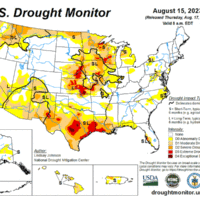
Figure 1. The progression of drought conditions have increased over the last two months in the Midwest. U.S. Drought Monitor.
The fall is a very important time to limit stressors on landscape plants. A stressed plant doesn’t produce as many secondary metabolites which aide in increased cold hardiness; so keeping your landscape plants irrigated during dry periods in late summer into fall is an important component of preparing plants for winter.
Remember some key steps concerning your landscape during extreme dry periods:
- Don’t wait until leaves begin dropping to start watering.
- Trees should receive the 5+5 rule.
- 5 gallons, plus 5 gallons per caliper inch.
- Ideally watering should occur in the early morning to prevent foliar diseases.
- Mulching to 3” can conserve moisture and reduce temperature in the upper root zone.
- Watering during dry conditions will help prevent future insect, disease, and other stress issues going into the fall and the following year. In fact, plants going into the winter that are stressed due to water deficiency will reduce the cold hardiness and therefore will be more likely to suffer cold injury and/or death.
- If a plant isn’t receiving enough water, the amount of nutrient uptake will not be sufficient and will experience deficiency from nutrients the following year.
To view this full article and other Purdue Landscape Report articles, please visit Purdue Landscape Report.
Subscribe and receive the newsletter: Purdue Landscape Report Newsletter.
Resources:
Trees in Times of Drought, Video, Purdue Agriculture
Drought Information, Indiana Department of Natural Resources
Drought? Don’t forget the trees!, The Education Store
Corn Belt Farmers’ Concerns About Drought and Heat-related Threats to Their Farm Operations, The Education Store
Safety Harvesting Quality Forage in a Drought, The Education Store
Planting Your Tree Part 1: Choosing Your Tree, Purdue Extension YouTube Channel
Tree Defect Identification, The Education Store
Tree Wound and Healing, Got Nature? Blog, Purdue Extension – Forestry and Natural Resources
Surface Root Syndrome, The Education Store
Planning the Tree Planting Operation, The Education Store
Tree Risk Management, The Education Store
ID That Tree, Purdue Extension-FNR YouTube playlist
Subscribe – Purdue Extension-FNR YouTube Channel
Kyle Daniel, Commercial Landscape and Nursery Crops Extension Specialist
Purdue Horticulture & Landscape Architecture
Illinois-Indiana Sea Grant Newsroom: Navigating the dos and don’ts of seafood consumption during pregnancy and breastfeeding can be quite challenging and even confusing at times. With a dozen or more seafood choices to navigate, making the right decision for you and your baby is not always easy. In the past, even medical professionals and dietitians offered conflicting advice, cautioning against seafood consumption during pregnancy.
However, things have changed significantly, thanks to the extensive efforts of experts like Charles Santerre, a former food toxicology professor at the Purdue University College of Health and Human Sciences.
Santerre, along with student researchers and a team of experts from across the United States, dedicated over a decade to unraveling the developmental benefits and risks associated with seafood consumption during pregnancy. Their research played a crucial role in establishing the foundation for seafood consumption standards that prioritize the health of babies and children.
Today, the Food and Drug Administration and the Environmental Protection Agency, along with university-created websites such as Fish for Your Health™, provide science-based seafood consumption advice that advocates for eating seafood rich in omega-3 fatty acids and low in mercury and PCBs twice per week.
For full article and videos please visit Fish for Your Health website offers quick safety and nutrition info – IISG
Resources
Aquaculture Industry in Indiana Growing, Purdue Today
Walleye Farmed Fish Fact Sheet: A Guide for Seafood Consumers, The Education Store, Purdue Extension resource center
Sustainable Aquaculture: What does it mean to you?, The Education Store
Fish: Healthy Protein Handout, The Education Store
The Benefits of Seafood Consumption The Education Store, Purdue Extension Resource Center
Walleye Farmed Fish Fact Sheet: A Guide for Seafood Consumers, The Education Store, Purdue Extension resource center
Pond and Wildlife Management website, Purdue Extension
Natural Resources University Podcasts, Collaboration with Mississippi, Florida, Iowa and Indiana Extension Services
Fish Cleaning with Purdue Extension County Extension Director, Got Nature? Blog, Purdue Extension – Forestry and Natural Resources
Aquatics & Fisheries, Playlist, Purdue Extension – Forestry and Natural Resources
Eat Midwest Fish, Illinois-Indiana Sea Grant online resource hub
Illinois-Indiana Sea Grant (IISG)
Purdue Landscape Report: When I was a kid, if you’d asked me what my favorite season was it would always immediately be summer. No school, time for playing outdoors, swimming, hiking, and late nights playing flashlight tag. Now, if I ranked the seasons from worst to best, they’d be Summer in last, followed by Winter (yes, I choose winter over summer), and a tie between Spring and Fall. With the best temperatures, a mix of sun and rain/snow, and an explosion of colors from new blooms in the spring to the reds, yellows, and oranges of leaves before they drop in the fall, Spring and Fall are by far my favorite times of the year. Well, we are nearly to the autumnal equinox with temperatures beginning to drop and the onset of some fall showers as I write this article. With Fall on the doorstep, I’ve received a repeated question recently, “Is it ok to plant a tree in the Fall?”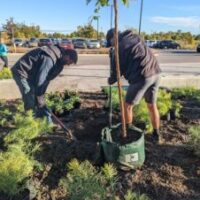
The short answer to this question is, “Yes!” If you want to add some new tree canopy to your yard, then pick your spot, choose the appropriate species, call #811 before you dig, and get that shovel out. Fall has some excellent reasons to plant trees, two of which I’ve already mentioned, cooler temps and autumn rains. While Autumn tends to be the driest time of the growing season, evapotranspiration rates are generally lower than during the summer season. These conditions reduce heat and water stress on trees (but are not an excuse to not mulch and water your new tree). Another good reason to plant in the fall as opposed to Spring is that instead of amping up for growing, trees are powering down and putting resources into root growth and storage. This means better establishment for the root system and a head start on protection for next year’s summer heat and drought.
There are some points to take into consideration, though. Again, make sure to properly water and mulch your new trees. They need an average of 5 gallons a week per inch of stem diameter if weekly rain isn’t providing around 1” of water. Be aware of when the first freeze is expected. You want to make sure your new trees have at least 6 weeks in the ground before the first freeze/frost and can stop watering after the first freeze. Also, for tree selection/protection, avoid broad leafed evergreen trees as they can be damaged by cold desiccation and wrap the trunks of your new trees to protect them from sunscald and animal damage like rubbing from bucks during the rut.
If you keep these points in mind and continue caring for your tree for the next 2-5 years you should have a successful planting. If you have any questions feel free to contact me at bmccalli@purdue.edu or you can find an ISA Certified Arborist at the following link Find an Arborist.
To view this full article and other Purdue Landscape Report articles, please visit Purdue Landscape Report.
Subscribe and receive the newsletter: Purdue Landscape Report Newsletter.
Resources:
The Purdue Landscape Report
Planning the Tree Planting Operation, The Education Store
Tree Risk Management, The Education Store
Tree Planting Part 2: Planting Your Tree, The Education Store
Planting Your Tree Part 1: Choosing Your Tree, Purdue Extension YouTube Channel
Summer Tree Care, Purdue Landscape Report
Tree Defect Identification, The Education Store
Tree Wound and Healing, Got Nature? Blog, Purdue Extension – Forestry and Natural Resources
Surface Root Syndrome, The Education Store
Shrubs and Woody Vines of Indiana and the Midwest, The Education Store
Ask an Expert: Tree Selection and Planting, Purdue Extension-Forestry & Natural Resources (FNR) YouTube playlist
ID That Tree, Purdue Extension-FNR YouTube playlist
Subscribe – Purdue Extension-FNR YouTube Channel
Ben McCallister, Urban Forestry Specialist
Purdue Forestry & Natural Resources
Hunters have been busy preparing food plots, hanging tree stands and working on their marksmanship skills in hopes for getting that buck of a lifetime. The Indiana deer hunting season for 2023-2024 started September 15th and goes to January 31st. As your hunting adventures begin, Purdue Extension-Forestry and Natural Resources (FNR) has the resources you need. You will find How-To videos that address how to score your white-tailed deer, age determination, how to harvest your deer and many other deer management resources. The FNR videos and publications will give you step-by step guidance on how to receive accurate measurements and share best data collection practices, along with sharing what materials are needed.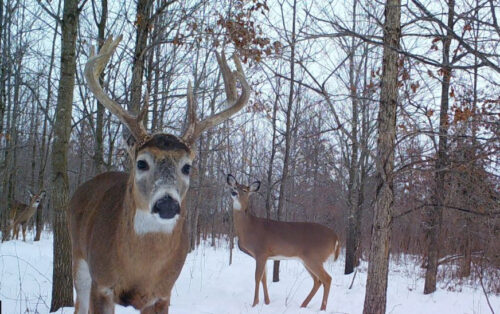
Here is a quick list of just a few of our resources for those deer hunting enthusiasts:
Ask an Expert: Wildlife Food Plots, video, Purdue Extension – Forestry and Natural Resources (FNR) YouTube Channel
Handling Harvested Game: Episode 1, Field Dressing, video, Purdue Extension – FNR YouTube Channel
Handling Harvested Game: Episode 2, Hanging & Skinning, video, Purdue Extension – FNR YouTube Channel
Handling Harvested Game: Episode 3, Deboning, video, Purdue Extension – FNR YouTube Channel
Handling Harvested Game: Episode 4, Cutting, Grinding & Packaging, video, Purdue Extension – FNR YouTube Channel
Deer Harvest Data Collection, Got Nature? Blog, Purdue Extension – FNR
How to Score Your White-tailed Deer, video, The Education Store, Purdue Extension Resource Center
White-Tailed Deer Post Harvest Collection, video, The Education Store
Age Determination in White-tailed Deer, video, The Education Store
Handling Harvested Deer Ask an Expert? video, Purdue Extension – FNR YouTube Channel
How to Build a Plastic Mesh Deer Exclusion Fence, The Education Store
Bovine Tuberculosis in Wild White-tailed Deer, The Education Store
Woodland Stewardship for Landowners: Managing Deer Damage to Young Trees, video, Purdue Extension – FNR YouTube Channel
Integrated Deer Management Project, Purdue FNR
For other hunting and trapping dates view the Indiana Department of Natural Resources, Fish and Wildlife Department website. Enjoy and stay safe!
Diana Evans, Extension & Web Communications Specialist
Purdue University Department of Forestry and Natural Resources
Rod Williams, Assistant Provost for Engagement/Professor of Wildlife Science
Purdue University Department of Forestry and Natural Resources
Jarred Brooke, Wildlife Extension Specialist
Purdue Forestry and Natural Resources
Weekly Review, Division of Entomology & Plant Pathology, Indiana DNR: Will Drews, Indiana Department of Natural Resources (DNR) Nursery Inspector & Compliance Officer, shares in August Weekly Review email from the Division of Entomology & Pathology how state funded kudzu control program works.
As some of you may know, kudzu (Pueraria montana var. lobata) is an invasive woody vine that can now be found throughout the state of Indiana. It is referred to colloquially as “the vine that ate the south,” and if you took a drive through some southern states (e.g. Tennessee, Georgia, the Carolinas, etc.) right now, you’d see why. Kudzu has tremendous growth potential, sometimes as much as 1 foot per day. Some vines reach lengths of up to 100 feet. Because of this it is a detriment to Indiana’s natural resources and has been listed as a prohibited invasive plant under the DNR’s Administrative Code as per 312 IAC 18-3-16.
While part of the language includes that the landowner “must take efforts to eliminate this species in such a manner as is consistent with federal and state law,” the Division of Entomology & Plant Pathology has been leading a state funded control program where sites are treated on a rotating, priority basis to eradicate or suppress further spread with no cost to the landowner. Over the course of the next couple weeks, close to 50 sites around the state will be treated.
If you think you have seen a new kudzu population, please send me that information (photos and GPS coordinates or address) at my above email address. Together, hopefully we can combat this invasive vine across Indiana and protect our natural resources!
For more information regarding this invasive vine Kudzu see the Indiana Department of Natural Resources, Division of Entomology & Plant Pathology, Kudzu.
Subscribe: Entomology Weekly Review.
Resources:
Indiana Department of Natural Resources-Division of Entomology & Plant Pathology
Indiana Department of Natural Resources-Natural Resources Conservation Service Plants Profile
Indiana Department of Natural Resources-National Invasive Species Information Center
Indiana Department of Natural Resources-Kudzu Alert & Identification Sheet
Indiana Department of Natural Resources-Kudzu Fact Sheet
Indiana Department of Natural Resources-Kudzu Before & After Treatment Photos
Invasive Species, Playlist, Purdue Extension – FNR YouTube Channel
Report Invasive Species, Purdue Invasive Species
What are invasive species and why should I care?, Got Nature? Blog, Purdue Extension – Forestry and Natural Resources
Indiana Department of Natural Resources: Invasive Species
Invasive Plant Species Identification, Video, Purdue Extension – FNR Youtube Channel
Mile-a-minute Vine, The Education Store
Invasive Plant Series: Swallow-worts, The Education Store
Will Drews, Nursery Inspector & Compliance Officer, WDrews@dnr.IN.gov
We all want clean water but sometimes it is hard to know how one individual or family can make a difference. People who have a home with a yard have the opportunity to make decisions that can protect and improve water quality.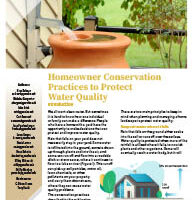
Rain that falls on your yard does not necessarily stay in your yard. Some water is infiltrated into the ground, some is drawn up through plants and into the air, and some can run off and flow into a roadside ditch or storm sewer, where it continues to flow to a lake or river. This runoff can pick up soil particles, motor oil, lawn chemicals, or other pollutants on your property and carry them downstream, where they can cause water quality problems.
Anyone who has a home with a yard can help protect and improve water quality. This publication offers practical advice about reducing impervious surfaces, select proper landscape plants, effective management of lawns, installing rain barrels and rain gardens, and proper care of septic systems.
To receive the free download visit the Purdue Extension’s resource center: The Education Store – Homeowner Conservation Practices to Protect Water Quality.
Resources:
Improving Water Quality by Protecting Sinkholes on Your Property, The Education Store, Purdue Extension’s resource center
A Landowner’s Guide to Sustainable Forestry: Part 5: Forests and Water, The Education Store
Improving Water Quality Around Your Farm, The Education Store, YouTube
Animal Agriculture’s Effect on Water Quality: Pastures and Feedlots, The Education Store
Improving Water Quality At Your Livestock Operation, The Education Store, YouTube
The Nature of Teaching: Discovering the Watershed, Purdue Extension-The Nature of Teaching
Rainscaping Education Program, Purdue Extension
Community Planning, Purdue Extension
Kara Salazar, Assistant Program Leader and Extension Specialist for Sustainable Communities
Purdue Department of Forestry and Natural Resources
Nick Burgmeier, Research Biologist and Wildlife Extension Specialist
Purdue Department of Forestry and Natural Resources
Laura Esman, Water Quality Program Coordinator
Purdue Department of Forestry and Natural Resources
Purdue Landscape Report: A new invasive insect of concern has been identified in the state of Georgia. In August of 2023, Georgia’s Department of Agriculture, along with the USDA, confirmed the presence of the yellow-legged hornet, Vespa velutina, outside of the city of Savannah. To date, this is the only confirmed identification of this insect in the United States; it has already established in Europe, the Middle East, and parts of Asia outside of its native range. V. velutina is a native of the subtropical and tropical regions of southeast Asia, and it is not yet clear how it arrived in North America. Much like the northern giant hornet, previously known as the Asian giant hornet or ‘murder hornet’, this insect will attack honeybee hives in search of food and represents a potential danger to the beekeeping industry.
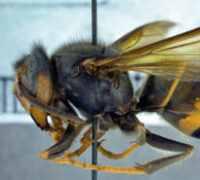
Figure 1. Yellow-Leg Hornet. Image Credit: Allan Smith-Pardo, Invasive Hornets, USDA APHIS PPQ, Bugwood.org
Yellow-legged hornets are predators and will regularly attack honeybees to provide food for their young, though it is possible they could attack other, similar species. Since honeybees concentrate their numbers in hives with a lot of in-and-out traffic, they provide an excellent opportunity for the hornets to hunt and provide food for their young. The hornets are effectively ambush predators, waiting in front of hive entrances and capturing workers with their legs as they leave the hive. The hornets then dismember the bees, returning to their young with only the thorax, which contains the largest amount of protein. However, it is believed that yellow-legged hornets only represent a lethal threat to weaker hives that are already experiencing problems; it is also too early to tell how already-existing honeybee issues, such as mite and disease issues, will interact with the presence of this insect.
The yellow-legged hornet, much like other members of Order Hymenoptera, is a social insect. They create oval or egg-shaped nests in trees that can house as many as 6,000 individuals. Colonies are composed of a foundress and her young, who become the workers within the colony. Female hornets will overwinter within tree hollows, leaf litter, or other environmentally stable locations, and once spring arrives, they start their own colony and give birth to new workers who care for young and hunt.
As with any new invasive species, it is critical to successful identify it and differentiate it from other species of wasps and hornets that we experience in the Midwest. At a glance, the yellow-legged hornet is barely discernable from European hornets, yellowjackets, and similar insects; they possess aerodynamic shapes with heavy yellow and black color patterns like many of their cousins. The most easily identified trait is their namesake: the legs of this insect tend to be black closer to the body, with the lower half of the leg bright yellow. The segments of the abdomen follow a similar pattern, with those segments closer to the center of the body being dominated by black, steadily becoming more yellow as you reach the tip of the abdomen. The yellow-legged hornet is also approximately an inch in length, with reproductive individuals sometimes reaching an inch and a half.
While remaining observant will be critical to reporting any invasive species, there are a few things to keep in mind about the yellow-legged hornet. This insect has only been found in one location in Georgia; no other states have any sightings or confirmed reports of this insect. There is also no evidence the insect has established a population in Georgia, there is only one confirmed sighting. The best course of action for now is to be vigilant and report any potential sightings by calling 1-866-NOEXOTIC, or you can contact our local Purdue Extension educator for assistance.
To view this full article and other Purdue Landscape Report articles, please visit Purdue Landscape Report.
Subscribe and receive the newsletter: Purdue Landscape Report Newsletter.
Resources:
Invasive Species, Playlist, Purdue Extension – FNR YouTube Channel
Report Invasive Species, Purdue Invasive Species
What are invasive species and why should I care?, Got Nature? Blog, Purdue Extension – Forestry and Natural Resources
Pest Management, The Education Store
Protecting Pollinators: Why Should We Care About Pollinators?, The Education Store, Purdue Extension resource center
Ask The Expert: What’s Buzzing or Not Buzzing About Pollinators , Purdue Extension – Forestry & Natural Resources (FNR) YouTube Channel
Purdue Pollinator Protection publication series, Purdue Extension Entomology
Subscribe Purdue Extension-Forestry and Natural Resources YouTube Channel
Bob Bruner, Exotic Forest Pest Educator
Purdue Entomology
Tom Creswell, Plant & Pest Diagnostic Laboratory Director
Purdue Botany and Plant Pathology
Cliff Sadof, Professor, Ornamental, Pest Management
Purdue Entomology Extension Coordinator
Recent Posts
- Summer Tree Care – Purdue Landscape Report
Posted: July 16, 2024 in Forestry, Forests and Street Trees, How To, Plants, Urban Forestry - Buoys Keep Eye on Great Lake Conditions
Posted: July 11, 2024 in Aquatic/Aquaculture Resources, Great Lakes, How To - ID That Tree: Learn to Identify Conifer Leaf Types
Posted: in Forestry, Forests and Street Trees, How To, Urban Forestry, Wildlife - ID That Tree: Types of Broadleaved Tree Leaves
Posted: July 10, 2024 in Forestry, Forests and Street Trees, How To, Plants, Wildlife - Learn How to Support Oak-Hickory Ecosystems
Posted: June 4, 2024 in Forestry, How To, Urban Forestry, Wildlife - Turtle Traffic: Save Turtles From Roads – My DNR
Posted: June 3, 2024 in How To, Wildlife - Spongy Moth in Spring Time – Purdue Landscape Report
Posted: in Alert, Forestry, Forests and Street Trees, How To, Invasive Insects, Urban Forestry - Purdue Plant Doctor Website Equips Homeowners and Professionals
Posted: May 29, 2024 in Forestry, Forests and Street Trees, How To, Urban Forestry - Take Your Turkey Fun Further – Wild Bulletin
Posted: May 9, 2024 in Forestry, How To, Wildlife - Invasive Bradford-Callery Pear: Why it is so detrimental and what to plant instead
Posted: May 8, 2024 in Forests and Street Trees, How To, Invasive Plant Species, Urban Forestry
Archives
Categories
- Alert
- Aquaculture/Fish
- Aquatic/Aquaculture Resources
- Ask the Expert
- Christmas Trees
- Community Development
- Disease
- Drought
- Forestry
- Forests and Street Trees
- Gardening
- Got Nature for Kids
- Great Lakes
- How To
- Invasive Animal Species
- Invasive Insects
- Invasive Plant Species
- Land Use
- Natural Resource Planning
- Nature of Teaching
- Plants
- Podcasts
- Ponds
- Publication
- Safety
- Spiders
- Timber Marketing
- Uncategorized
- Urban Forestry
- Webinar
- Wildlife
- Wood Products/Manufacturing
- Woodland Management Moment
- Woodlands
